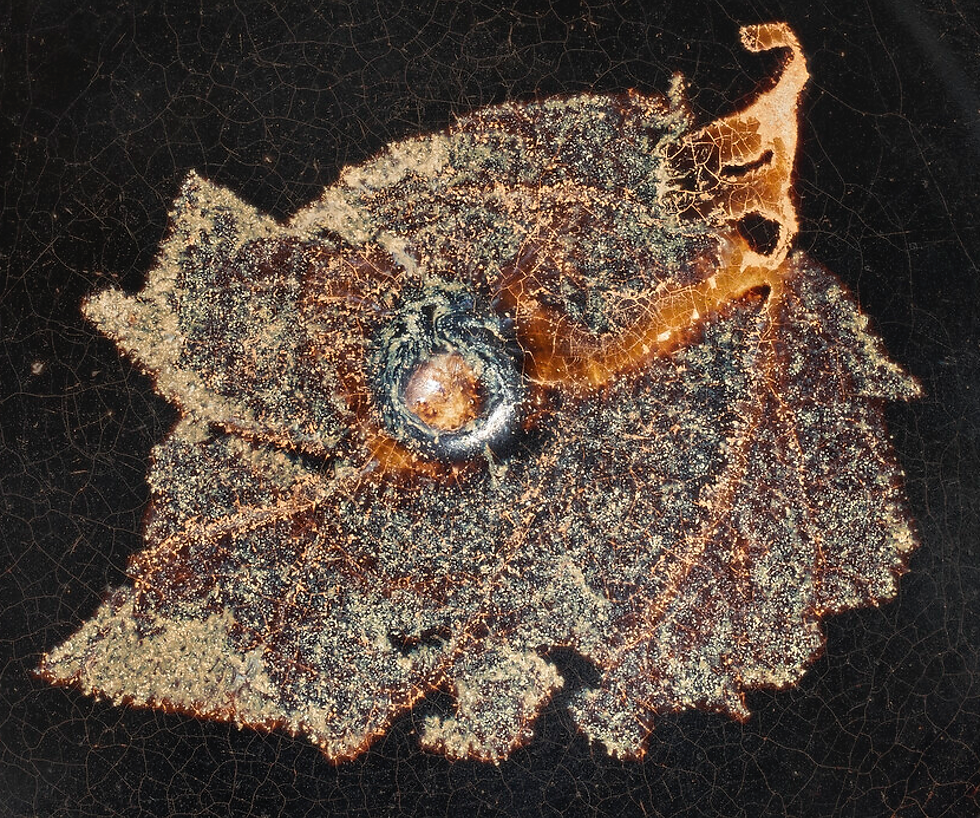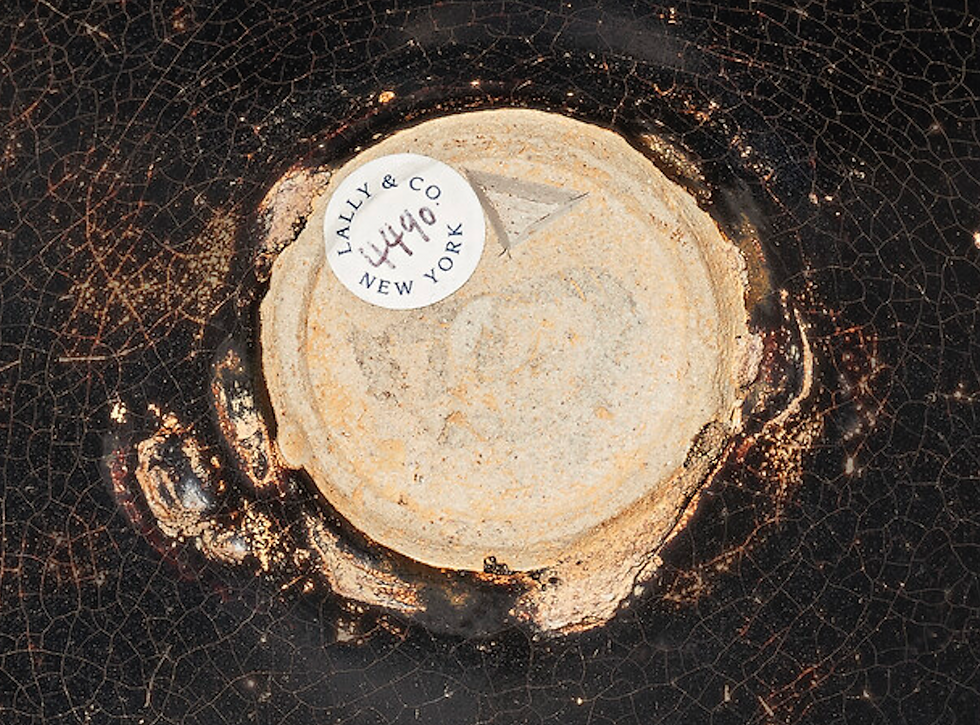宋代筆記 vol.67 藍理捷63萬美金(460萬人民幣)南宋吉州窯黑釉木葉紋盞 - Song Notes, J.J.Lally’s 4.6m RMB Jizhou Leaf-Decorated Tea Bowl, Song Dynasty.
- SACA
- Jul 13, 2024
- 4 min read
Updated: Feb 9
這件來自藍理捷的吉州窯木葉盞可能是木葉茶盞中近期拍賣紀錄最高的,將近500萬人民幣的價格也將藏家對茶禪的信仰和熱衷推向高峰。這件的缺點是釉面比較乾澀,優點是木葉大小和清晰度。每一片葉子都不盡相同,也是這類茶碗的迷人之處。
This Jizhou kiln leaf bowl from J.J.Lally is probably the highest recent auction record for a wood-leaf tea bowl, with a price tag of nearly RMB 5 million, and pushes the collector's belief in and enthusiasm for the Zen of Tea to its peak. The disadvantage of this piece is the rather dry glaze, the advantage being the size and clarity of the wooden leaves. The fact that each leaf is different is one of the fascinating aspects of this type of tea bowl.
南宋 吉州窯黑釉木葉紋盞
SOUTHERN SONG DYNASTY (1127-1279)
成交價
美元 630,000
估價
美元 60,000 – 美元 80,000
拍品終止拍賣:
2023年3月23日
南宋 吉州窯黑釉木葉紋盞5 7/8 in. (14.9 cm.) diam., brocade box
來源
藍理捷, 紐約, 編號4490
吉州窯木葉紋茶碗(葉紋茶碗)是吉州窯最著名的產品,也是所有茶用陶瓷中最著名的產品之一。製作方法是在碗內壁貼上樹葉,然後將碗浸入深褐色釉漿中。在窯中燒制時,化學反應會剝去茶葉的深褐色,形成茶葉結構的鬼斧神工,顏色通常為金琥珀色或淡黃色。有關葉片裝飾製作過程的進一步討論,以及以這種方式裝飾的兩個碗的例子,第一個來自芝加哥藝術學院收藏,第二個來自哈佛大學阿瑟-M-賽克勒博物館,請參閱 R. Mowry, Hare's Fur, Tortoiseshell, and Partridge Feathers, Cambridge, Massachusetts, 1996, 第 259-62 頁,編號 107 和 108。
大阪東方陶瓷博物館藏有一隻這種類型的碗,被列為日本重要文化財產,其插圖見 G. 長谷部,《世界陶瓷藝術,宋代》,東京,1977 年,第 12 卷,第 109-10 頁,圖 107-8。107-8. 另一件類似的碗插圖見《東方陶瓷,世界的偉大收藏》,東京國立博物館,東京,1980 年,第 1 卷,編號 94。另見香港佳士得 2016 年 11 月 30 日拍出的楊德堂藏品中非常相似的一件,拍號 3162。
C-Link Research and Development Ltd.編號為2649WG19的熱釋光測試結果與本拍品的年代一致。
Leaf-decorated tea bowls, referred to in Chinese as muye wenyang wan or shuye tuyang wan (‘tree-leaf-pattern bowls’), are the most famous products of the Jizhou kilns and among the most celebrated of all ceramics made for tea use. The design was created by affixing a leaf to the interior of a bowl and then immersing the bowl in the dark brown glaze slurry. When fired in the kiln, chemical reactions stripped the leaf of its dark brown color, creating a ghostly impression of the leaf structure, typically golden amber or pale yellow in color. For further discussion of the processes involved in producing leaf decoration and for two examples of bowls decorated in this manner, the first from the collection of The Art Institute of Chicago and the second from the Arthur M. Sackler Museum, Harvard University, see R. Mowry, Hare’s Fur, Tortoiseshell, and Partridge Feathers, Cambridge, Massachusetts, 1996, pp. 259-62, nos. 107 and 108.
A bowl of this type from the Ataka Collection, classified as an Important Cultural Property of Japan, is in The Museum of Oriental Ceramics, Osaka, and illustrated by G. Hasebe, Ceramic Art of the World, Sung Dynasty, Tokyo, 1977, vol. 12, pp. 109-10, figs. 107-8. Another comparable bowl is illustrated in Oriental Ceramics, The World’s Great Collections, Tokyo National Museum, Tokyo, 1980, vol. 1, no. 94. See, also, the very similar example from the Yangdetang Collection, sold at Christie’s Hong Kong, 30 November 2016, lot 3162.
The result of C-Link Research and Development Ltd. thermoluminescence test no. 2649WG19 is consistent with the dating of this lot.














Comments